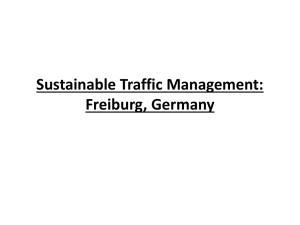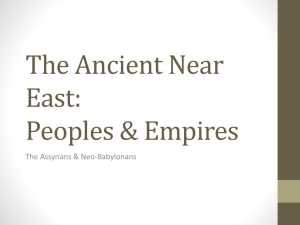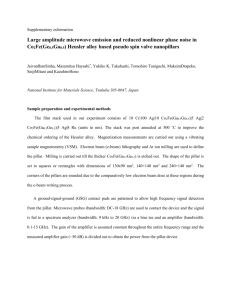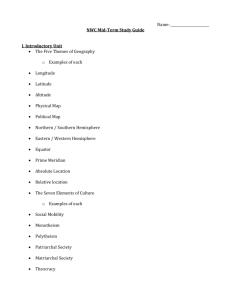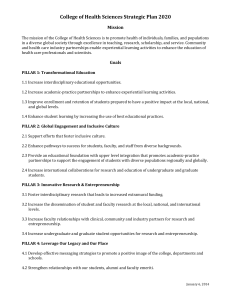Morphology Engineering of Hollow Carbon Nanotube Pillars by
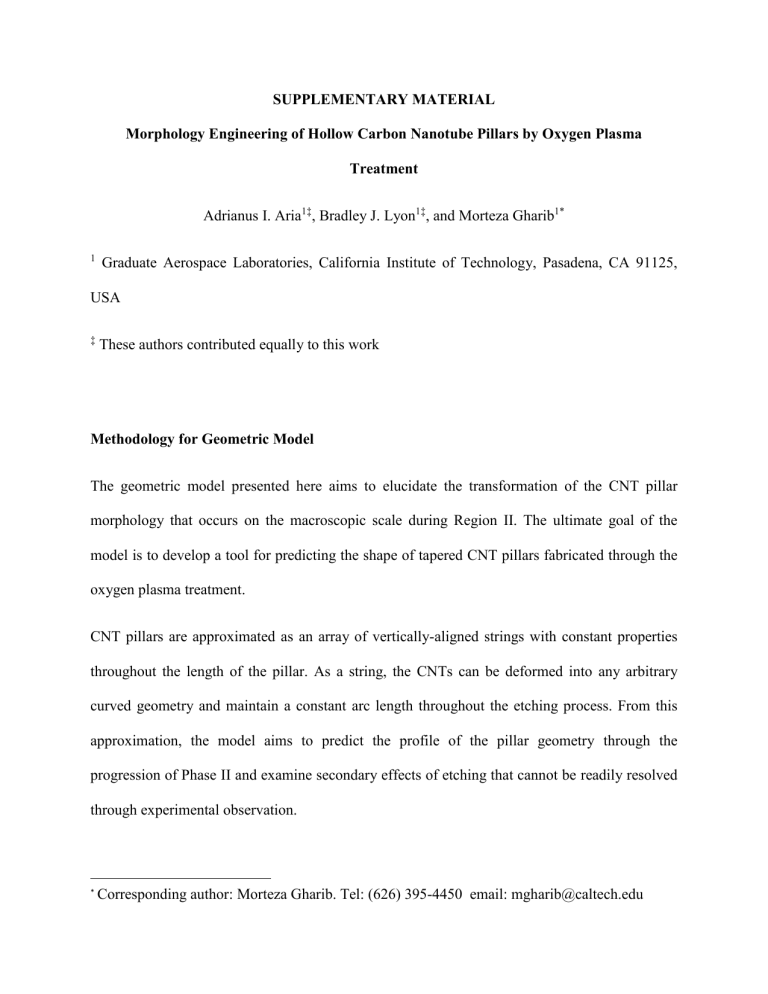
SUPPLEMENTARY MATERIAL
Morphology Engineering of Hollow Carbon Nanotube Pillars by Oxygen Plasma
Treatment
Adrianus I. Aria
1‡
, Bradley J. Lyon
1‡
, and Morteza Gharib
1*
1
Graduate Aerospace Laboratories, California Institute of Technology, Pasadena, CA 91125,
USA
‡
These authors contributed equally to this work
Methodology for Geometric Model
The geometric model presented here aims to elucidate the transformation of the CNT pillar morphology that occurs on the macroscopic scale during Region II. The ultimate goal of the model is to develop a tool for predicting the shape of tapered CNT pillars fabricated through the oxygen plasma treatment.
CNT pillars are approximated as an array of vertically-aligned strings with constant properties throughout the length of the pillar. As a string, the CNTs can be deformed into any arbitrary curved geometry and maintain a constant arc length throughout the etching process. From this approximation, the model aims to predict the profile of the pillar geometry through the progression of Phase II and examine secondary effects of etching that cannot be readily resolved through experimental observation.
* Corresponding author: Morteza Gharib. Tel: (626) 395-4450 email: mgharib@caltech.edu
The profile of the pillar is modeled as a hyperbolic cosine (Equation 1). A hyperbolic cosine is
typically used in models to represent the curvature of strings [1].
𝑦 = 𝑎 cosh ( 𝑥 𝑏
)
(1)
The origin of the coordinate system is placed at the center of the pillar tip (Figure S1). The direction along the length of the pillar is given by x . The radius of the pillar at a given height is given by y . Equation 1 describes the profile for the right side of the pillar. The pillar is axisymmetric such that the profile for the left side of the pillar is given by reflecting the profile generated by Equation 1 across the x-axis. The radius at the tip of the pillar is given by a . From the experimental results, it was observed that the base is constant throughout Region II. This constraint is present in the model such that the base diameter for all generated microneedles is constant, d
0
.
2a y x s d
0
Figure S1. Coordinate and variable definitions for geometric model.
The parameter b is set to keep the arc length, s , of the CNT string constant throughout the etching process. The consistency of the base diameter in the experimental results indicates that the primary method of morphology change during Phase II is not the large-scale destruction of individual CNTs but rather the densification of the CNT network causing the CNT pillar to compress. The arc length of the CNT string is set as the initial height of the pillar before etching.
The parameter b is related implicitly to arc length by Equation 2. The parameter b is solved for numerically to within an error of 0.01% in arc length. 𝑠 = ∫
0 𝑏 cosh
−1
(𝑑
0
/2𝑎)
√( 𝑎 𝑏 sinh ( 𝑥 𝑏
) )
2
+ 1 𝑑𝑥 (2)
Figure S2 depicts the model results for the evolution through Region II of a cylindrical pillar of initial height 400 µm with a base diameter of 150 µm. As the O/C ratio of the pillar increases, the tip diameter begins to contract. The side profile of the pillar is initially linear and then becomes more concave as etching progresses. Interior CNTs are represented as a set of aligned, similar curves based on the computed profile of the pillar. The termination of Region II is depicted in the final pillar profile with a tip diameter of 10 µm.
Figure S2. Model results for the progression of a CNT pillar with an initial diameter and height of 150 µm and 400 µm, respectively, through Region II. Starting with the initial pillar morphology ( upper left ) progressing to the final morphology ( bottom right ) the increased concavity of the profile is observed concurrent with a reduction in the total height of the pillar.
References
[1] Ng HN, Grimsdale RL. Computer graphics techniques for modeling cloth. Computer
Graphics and Applications, IEEE. 1996;16(5):28-41.


